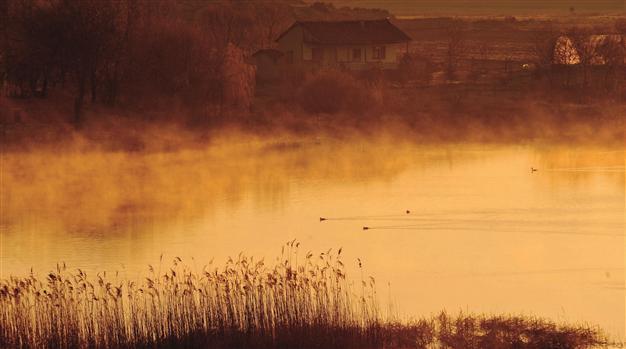Historic Phrygian Valley attracts photographers
UŞAK - Anatolia News Agency

The Phrygian Valley has many known and unknown places for photographers, who show big interest in the region thanks to the contest. AA photo
The Phrygian Valley, located within the borders of the Aegean province of Kütahya, Afyonkarahisar and the central Anatolian province of Eskişehir, has become the focus of interest among photographers thanks to a photography contest organized by the Phrygia Union for Protection and Development of Phrygian Culture (FRİGKÜM).The third photography contest, which aims to promote the Phrygian Valley and the cultural heritage around it through photographs, concluded recently. The contest generated increased interest among photography artists in the region and this year also saw the launch of photography tours, organized in the region.
The first photography contest, held in 2010, saw 512 photographers from various parts of Turkey enter the competition with 1,800 photos.
Providing information about events for the promotion of Phrygian Valley, FRİGKÜM Term President and Eskişehir Governor Kadir Koçdemir said that a nearly 430-kilometer-long walking route through the Phrygian Valley had been finished and they were very pleased for the interest of photographers in the region.
Koçdemir said that the region had hundreds of places for photographers to explore, adding, “The Phrygian Valley is one of the most significant areas of cultural heritage in the world. It is known in Europe and especially in the U.S. The photography contests drew many photography artists to the region. They come to the region in groups and take photos in this colorful and natural environment. As well as well-known photography areas such as Yazılıkaya, Seyyid Battalgazi Külliyesi, Doğanlıkale, Gerdekkaya, Kümbet, Bahşeyiş Anıtı, Emre Lake, there are also many unknown places for photography in the region.”
The governor said that participation in the contest was growing every year, adding, “In 2010, 139 photographers joined the contest and that increased to 240 this year. Thanks to these photos, we have a very good photography archive of the region. We also organize mountain bike events to promote the region. We have made a promotional film and will initiate new projects with the collaboration of the three provinces.”
Since ancient times
The Phrygian Valley has been home to a number of communities since ancient times. Open-air temples that were dedicated to Cybele, the Phrygians’ main goddess, and other structures built for defensive purposes are among the most striking features in the region, although it is also home to various shelters carved into rock faces during Roman times, as well as burial chambers, sheep-herding pens and barns, cisterns, warehouses, churches and chapels.
The area, which covers three provinces, was dominated by the Phrygians between 900 and 600 B.C. but was dealt a fatal blow in 676 B.C. by the Cimmerians, who came from further east, beyond Anatolia. Later, the area would fall under Roman control.
Some areas in the Phrygian Valley were already registered as protected sites by the Culture and Tourism Ministry.
The Phrygians experienced a golden age during the reign of King Midas, who ruled from Gordion – close to present-day Ankara – and is thought to have lived between 738 and 696 B.C.

















